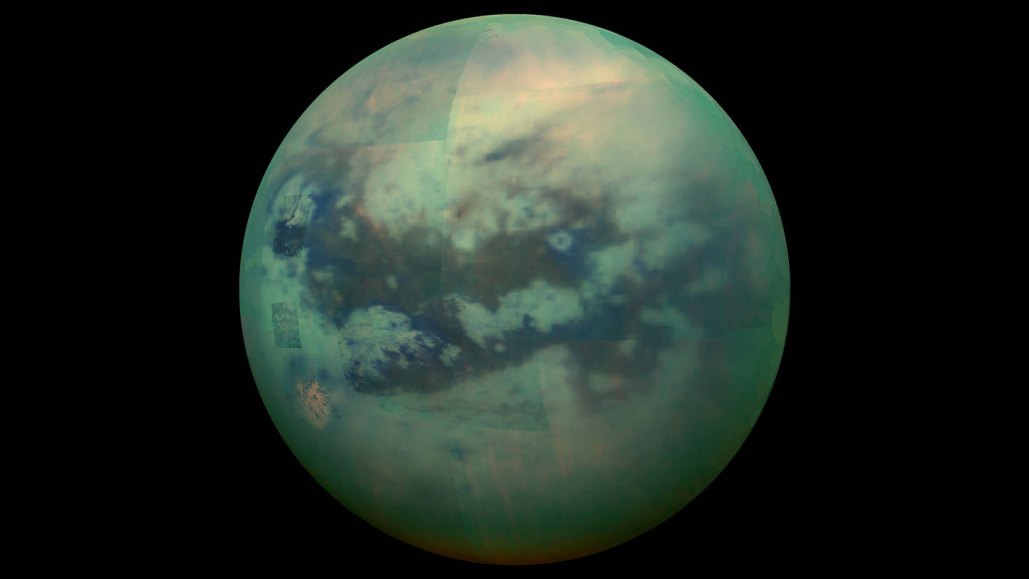Titan’s dark dunes could be made from comets
The origin of the rippling sands has long been a mystery

Titan’s dunes (dark regions) can be observed in this infrared composite of the largest of Saturn’s moons, which was taken in 2015 by NASA’s now-defunct Cassini spacecraft.
NASA